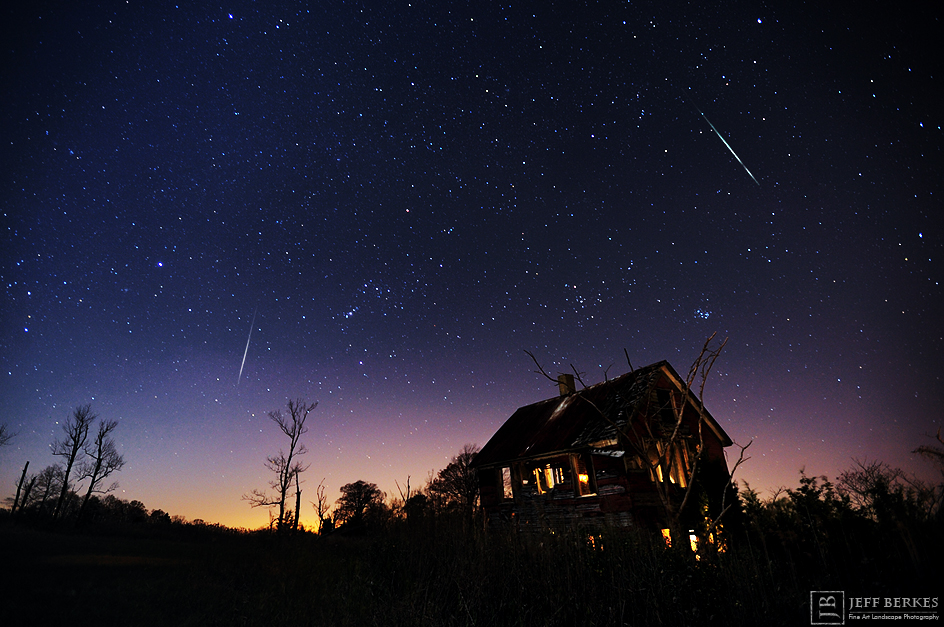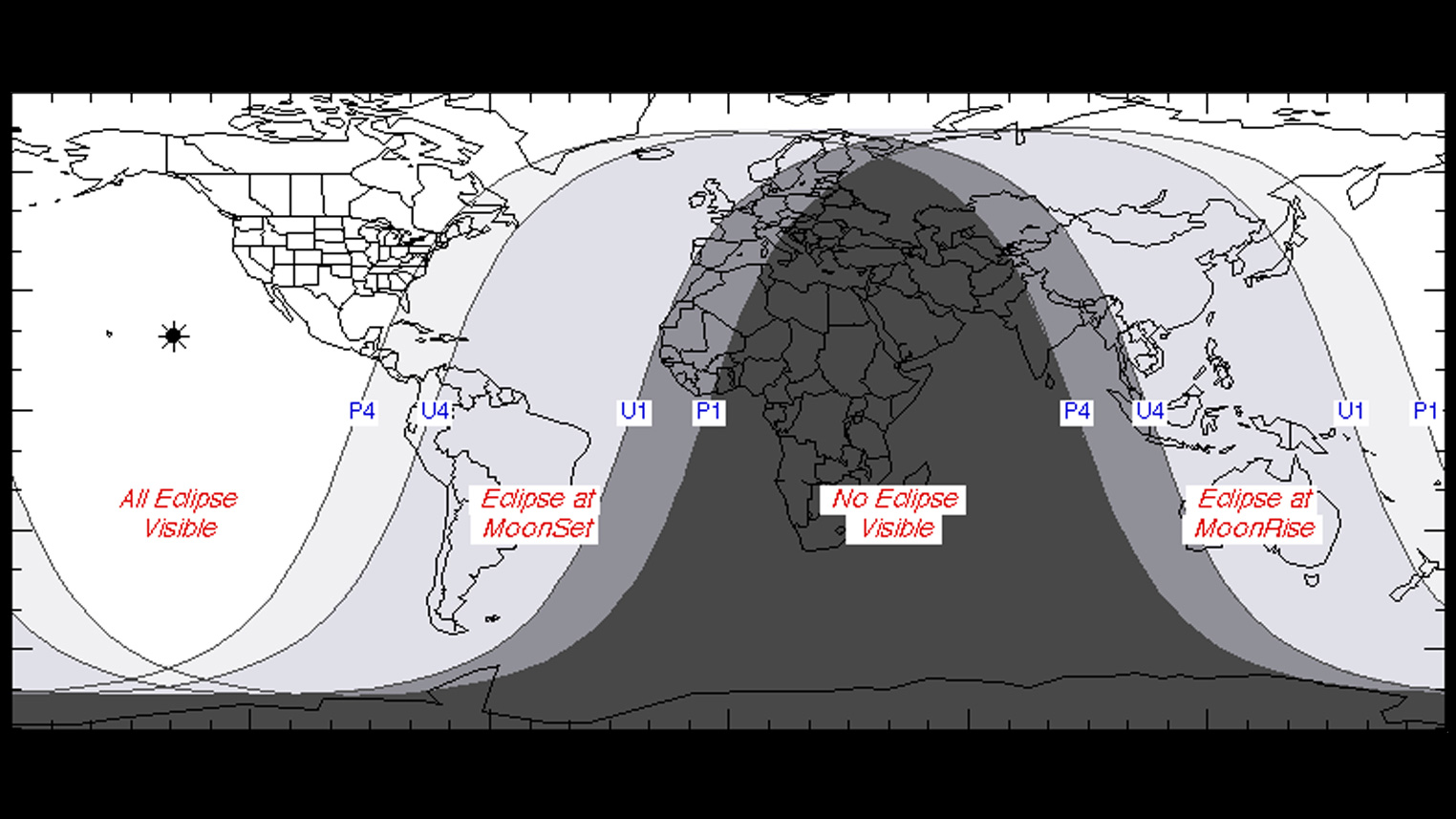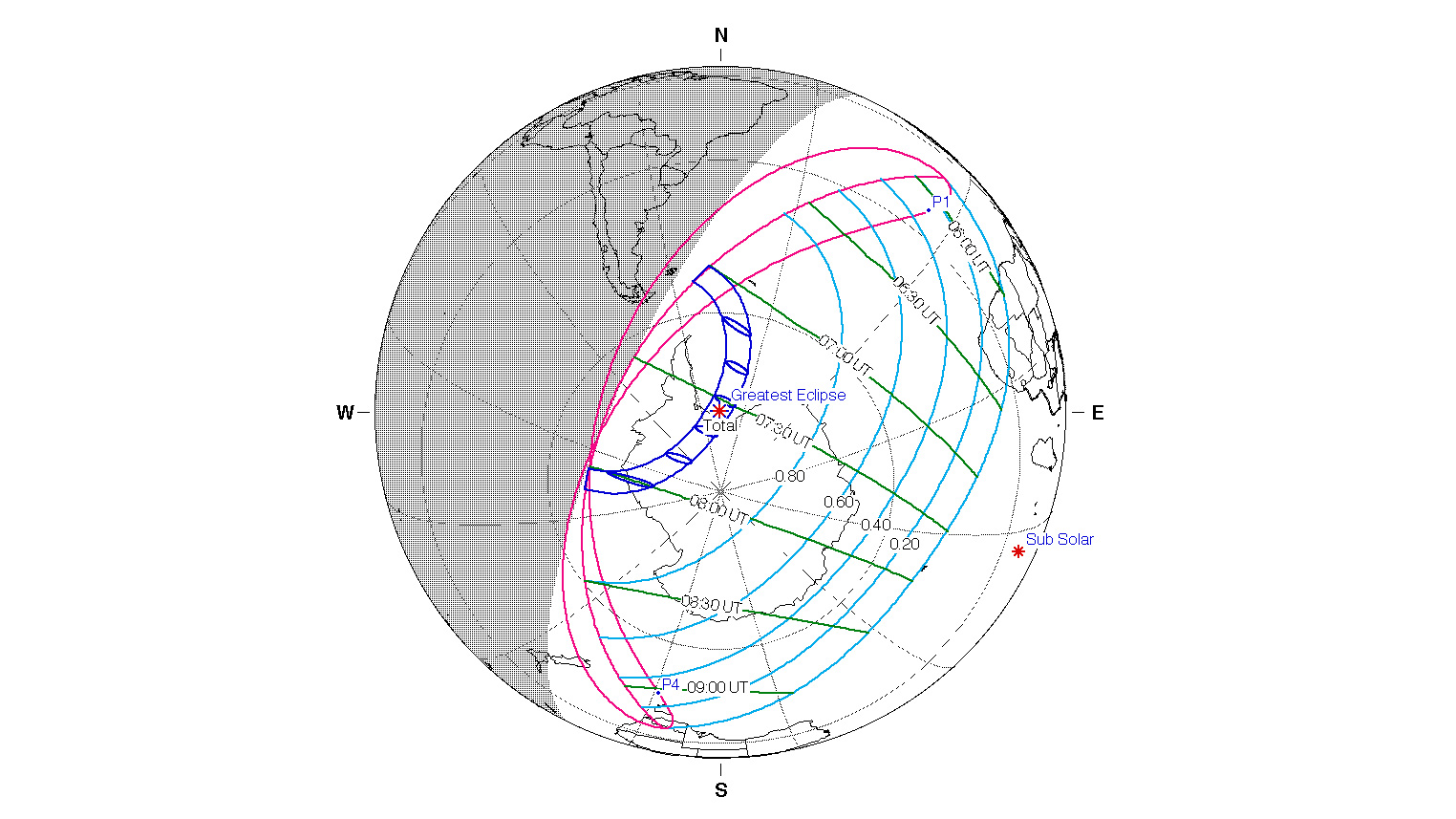An overview of the fall skies of 2021
There is going to be a lot to look at between now and the December solstice: two eclipses, four meteor showers, the brightest planet in the solar system reaching its pinnacle in brilliance and a potential bright comet!
Let's take a closer look at each of these upcoming events.
Related: The brightest planets in the night sky: How to see them (and when)
Nov. 19: An almost total eclipse of the moon.
North and South America are in a very good position to see the lunar eclipse on Nov. 19. It will take place in the predawn hours, with the visible stages ending before moonset. The moon will slide through the southern portion of Earth's dark umbra, and at the point of greatest eclipse 97.5% of the moon's diameter will be immersed in shadow.
Because some of the sunlight striking Earth is diffused and scattered by the planet's atmosphere, Earth's shadow is not completely dark. Enough of this light reaches the moon to give it a faint coppery glow. This glow, combined with the uneclipsed yellow sliver of moon, will create what some people call the "Japanese lantern effect" — a strikingly beautiful sight for the naked eye, or when viewed through binoculars or a small telescope.
The very early stages of the eclipse will be visible from the United Kingdom and parts of northern Europe prior to moonset. Eastern Asia and Australia will also see it after moonrise later that evening. Greatest eclipse comes at 4:03 a.m. Eastern Time, or 1:03 a.m. Pacific Time.
Dec. 4: Total eclipse of the sun
The final eclipse of 2021 will be visible only from the icy continent of Antarctica. The path of totality, averaging 265 miles (427 kilometers) wide, will sweep inland south-southwest from the Weddell Sea, passing over Berkner Island and the Filchner-Ronne Ice Shelf, then continuing across West Antarctica, darkening the Executive Committee Range (a mountain range consisting of five major volcanoes), before moving offshore at the Ross Sea.
Breaking space news, the latest updates on rocket launches, skywatching events and more!
For even the most ardent eclipse chaser, this will prove to be a tough assignment, although a few hardy souls did see the last total solar eclipse visible there in 2003 from the ground, while others flew over the frozen land in commercial aircraft. A small partial eclipse can be glimpsed from parts of South Africa, Namibia and Botswana, as well as Tasmania, southern sections of New South Wales and Victoria in Australia and a small slice of southernmost New Zealand and Stewart Island.
Meteor showers
Coming less than a day after full phase, moonlight will flood the sky and spoil observations of the maximum of this year's Orionid meteor shower, which occurred the night of Oct. 20-21. Under favorable circumstances, this two-day display yields about two dozen meteors per hour, many with persistent trains.
For about two weeks, conditions will be very favorable for observing the weak, long-lasting Taurid meteor shower, which should peak about Nov. 8, four days after the new moon. Observers with clear, dark skies can expect to see about eight to 10 Taurids per hour throughout early and mid-November, with perhaps as many as a dozen or so per hour on the peak night. On the date of maximum activity, the radiant will be highest in the southern sky at around 1 a.m. in your local time.
Somewhat unusually, just as many Taurid meteors can be seen in the evening as in the morning, because the shower's radiant (midway between the V-shaped Hyades star cluster and the famous Pleiades) is fairly high all night. The higher a shower's radiant, the more meteors appear everywhere in the sky.
The Taurid shower's display lasts for an extremely long time, and at least a couple of meteors per hour can be seen from Oct. 20 to Nov. 30.
The Taurids are debris from the periodic comet Encke. The meteors are the slowest of any major meteor shower, encountering Earth at just 17 miles (28 km) per second. As a result, the Taurids are sometimes referred to as "The Halloween fireballs," because of the many brightly colored meteors. While yellow is the predominant color, many orange, green, red and blue fireballs have been observed.

Meanwhile, a nearly full moon will severely hamper observations of the famous Leonid meteor shower. It reaches maximum on Nov. 17, but bright moonlight will largely wash out most of the meteors.
Moonlight will cause still more problems in December, when the waxing gibbous moon will brighten the sky for much of the night and will seriously hamper observations of this year's Geminid meteor shower, which reaches maximum on the night of Dec. 13-14. The emanation point of these meteors, near the bright star Castor in Gemini (hence the name Geminids) rises from the east-northeast as evening twilight ends; it will be well placed in the northwestern sky when the moon sets on Dec. 14 at roughly 2:50 a.m. local time and on Dec. 15 at roughly 3:50 a.m. Morning twilight will not interfere until about 6 a.m. During those periods of darkness, observers with clear, dark skies may see perhaps as many as one meteor per minute. Slow-moving fireballs are a feature of this display.
December's "Christmas star"

During December, Venus will be more dazzling than at any other point in 2021 and 2022, in either the evening or the morning sky. It will be so bright that you’ll be able to spot it in a clear blue sky before sunset if your eye lands on the right point in the south-southwest. As twilight comes on, Venus will appear to grow increasingly large and bright.
Venus reaches its highest altitude of the year in early December (for observers at middle northern latitudes), and it's at its greatest brilliancy on Dec. 3 (though it shines at essentially its maximum possible brightness of magnitude -4.9 for much of the month). Nonetheless, this is not one of Venus's better apparitions.
Bright as it is, the planet is only about 15 degrees above the horizon 45 minutes after sunset during the first half of December; you may have to move around to get a view past local obstructions. Our sister world is nearing the end of one of its low apparitions, and by Christmas it will drop rapidly into the twilight glow, gain speed and will vanish from the evening sky during the first week of January.
The comet
Comet Leonard, cataloged as C/2021 A1, was discovered by Gregory Leonard at Arizona's Mount Lemmon Observatory on Jan. 3, 2021 — exactly one year before perihelion, its closest approach to the sun. On Dec. 12, it will pass within 21.7 million miles (34.9 million km) of Earth, and on Jan. 3, 2022, it will pass within 57.2 million miles (92 million km) of the sun. During the first two weeks of December, Comet Leonard will be visible for a couple of hours before sunrise, low in the east-northeast sky. It will track through the constellations Coma Berenices, Boötes and Serpens Caput.
It should be an easy object to see with a small telescope or a pair of binoculars — and perhaps with the unaided eye. During the latter half of December, as the comet gets closer to the sun, it will gradually get absorbed into the light of dawn and finally disappear from view. Space.com will keep you posted on its development as we move into December, so stay tuned!
Joe Rao serves as an instructor and guest lecturer at New York's Hayden Planetarium. He writes about astronomy for Natural History magazine, the Farmers' Almanac and other publications. Follow us on Twitter @Spacedotcom and on Facebook.

Joe Rao is Space.com's skywatching columnist, as well as a veteran meteorologist and eclipse chaser who also serves as an instructor and guest lecturer at New York's Hayden Planetarium. He writes about astronomy for Natural History magazine, Sky & Telescope and other publications. Joe is an 8-time Emmy-nominated meteorologist who served the Putnam Valley region of New York for over 21 years. You can find him on Twitter and YouTube tracking lunar and solar eclipses, meteor showers and more. To find out Joe's latest project, visit him on Twitter.




